Photo
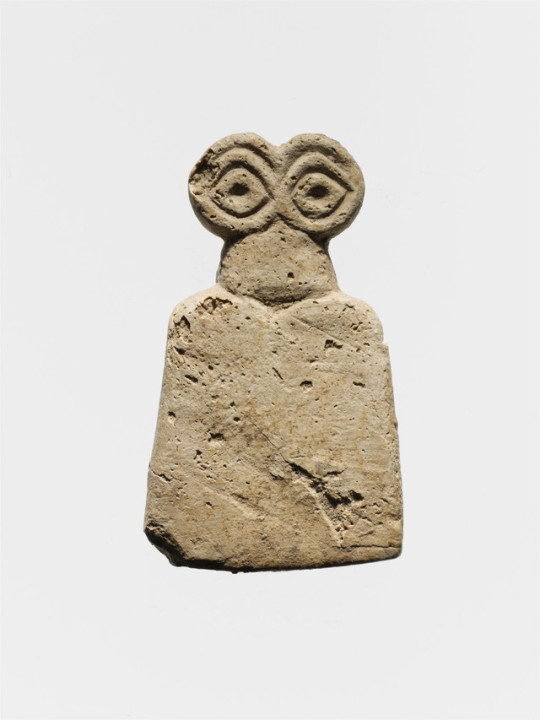
Eye idol, Ancient Near Eastern Art
Medium: Gypsum alabaster
Gift of The Institute of Archaeology, The University of London, 1951 Metropolitan Museum of Art, New York, NY
http://www.metmuseum.org/art/collection/search/324148
389 notes
·
View notes
Text
with less atmospheric information, there is more in life that is open-ended, paused, mysterious, and available to contemplate remotely. Less small surprises, maybe.
0 notes
Photo

Devises heroïqves - Claude Paradin - 1557 - via Internet Archive
216 notes
·
View notes
Text
On ID Professionals
In the midst of a transitional time, going from “”student”” to “”professional”” (are you ever done being a student?), a stable figure can be a source of inspiration and even comfort (it IS possible to get a job!).
With a product design degree, there exists a wide breadth of potential places to go with one’s career. Just as I didn’t know I could be a product designer when I was a kid, as a (soon-to-be) college graduate, there are still so many jobs that I never would have thought existed.
Even if I don’t want to be with the same company or have the same job title as some of the professionals that spoke to us, hearing their trajectories and their perspectives was enriching. I found the same thing when I worked at Hasbro: that I love hearing about how people end up where they are. It’s reassuring to see examples of what I want to do, and what I don’t want to do, because it reminds me that the world is dynamic, and you never know where your choices might take you.
0 notes
Text
Survivorship Bias
I have posted about survivorship bias and how it affects your career choices: how a Hollywood actor giving the classic “follow your dreams and never give up” line is bad advice and is pure survivorship bias at work.
When I read up on the wikipedia page, I encountered an interesting story:
During WWII the US Air Force wanted to minimize bomber losses to enemy fire. The Center for Naval Analyses ran a research on where bombers tend to get hit with the explicit aim of enforcing the parts of the airframe that is most likely to receive incoming fire. This is what they came up with:

So, they said: the red dots are where bombers are most likely to be hit, so put some more armor on those parts to make the bombers more resilient. That looked like a logical conclusion, until Abraham Wald - a mathematician - started asking questions:
- how did you obtain that data? - well, we looked at every bomber returning from a raid, marked the damages on the airframe on a sheet and collected the sheets from all allied air bases over months. What you see is the result of hundreds of those sheets. - and your conclusion? - well, the red dots are where the bombers were hit. So let’s enforce those parts because they are most exposed to enemy fire. - no. the red dots are where a bomber can take a hit and return. The bombers that took a hit to the ailerons, the engines or the cockpit never made it home. That’s why they are absent in your data. The blank spots are exactly where you have to enforce the airframe, so those bombers can return.
This is survivorship bias. You only see a subset of the outcomes. The ones that made it far enough to be visible. Look out for absence of data. Sometimes they tell a story of their own.
BTW: You can see the result of this research today. This is the exact reason the A-10 has the pilot sitting in a titanium armor bathtub and has it’s engines placed high and shielded.
46K notes
·
View notes
Photo





warm stool by bouillon
http://www.design-bouillon.jp/
246 notes
·
View notes
Text
PLOT.PATH
What I want to do: Draw, communicate, collaborate, learn, create, think about the future, experiment, make discoveries, push boundaries, make discoveries, become skilled.
What I don’t want to do: Bureaucracy, paperwork, “traditional” ID.
Where I want to work: Anyplace that allows for variety. Sometimes working on the computer, other times out in the world. I could do a huge company, or a small startup, as long as I’m on a personable and creative team.
What I want to learn: All the ways to make things. Fabrication, new tools. I want to learn about people. I want to find new ways of communicating ideas, and get really good at telling a story.
I want to have time to really dive into my hobbies, spend time outside, and take classes in random things.
I’m good at: Visual communication, solving problems.
I want to ultimately design things that get people to make their own discoveries.
0 notes
Text
On Being a Human
Here’s what I am: Learning, feeling, and making; in a state of constant flux. I would say I’m a designer, but I don’t really know what world I want to inhabit. Corporations? Agencies? Galleries? Consultancies?
My bed? The woods? etc.
Where is the word that instantly denotes what I want to do all day?
I’m interested in the spaces between distinctions- between art and design, between objects and environments, between people and their emotions. I want to investigate these relationships, challenge them and create new ones, or simply render them visible.
What I do about it: A pretty smart dude once gave me some pretty smart advice: Trust your intuition.
I am embracing what I saw before as hindrances to my ambitions (scattered, emotional, has no plan), and turning those into my assets (multifaceted, empathetic, genuine). Working hard comes with the territory, so I will always be looking to improve my skills where they lack.
Oddly enough, the attitude of self acceptance that I have been cultivating has actually made it easier to work on my areas that need improvement. I continue learning to trust myself, and I will follow that which teaches me and brings me joy.
2 notes
·
View notes
Link
“Everyone is in such close proximity to each other in New York and no one is really talking. I think people are kind of afraid to talk to each other in general, but especially after an election where people were so shocked and they don’t feel safe about the future, and aren’t really sure about the direction of their country.
How are you supposed to feel like you are part of a community in that environment?”
@processone Thought you might like this
2 notes
·
View notes
Photo








What do you care about?
Philly Dude wants to know.
I traveled around West Philly yesterday and hung these banners, hoping to see what, if any, interactions come of them. I will be checking back in on them as time goes on.
2 notes
·
View notes
Photo
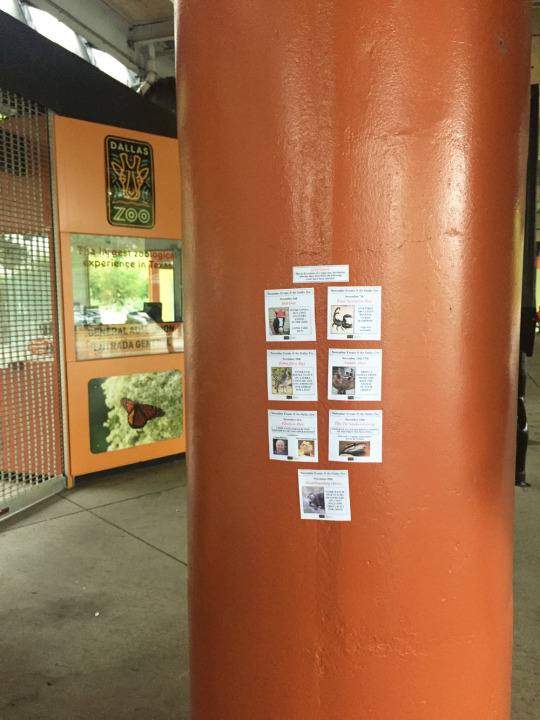
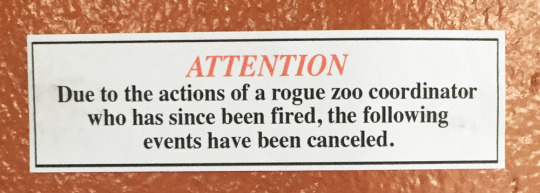
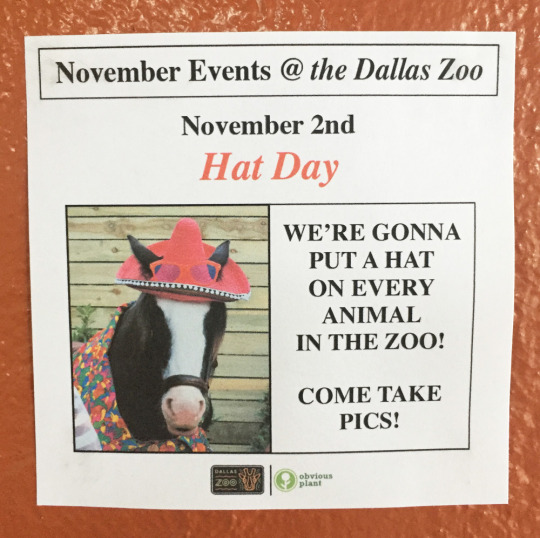
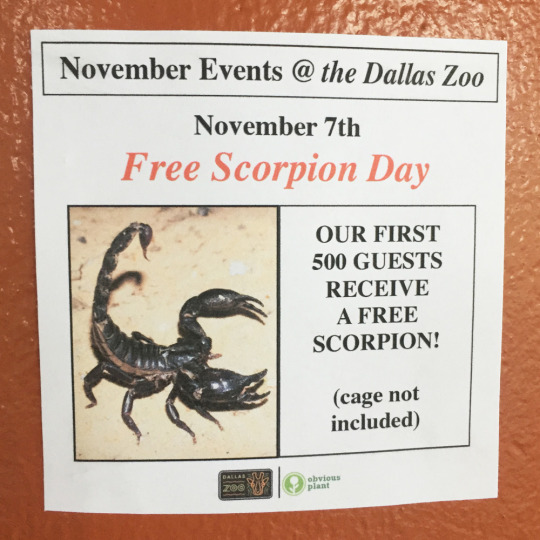
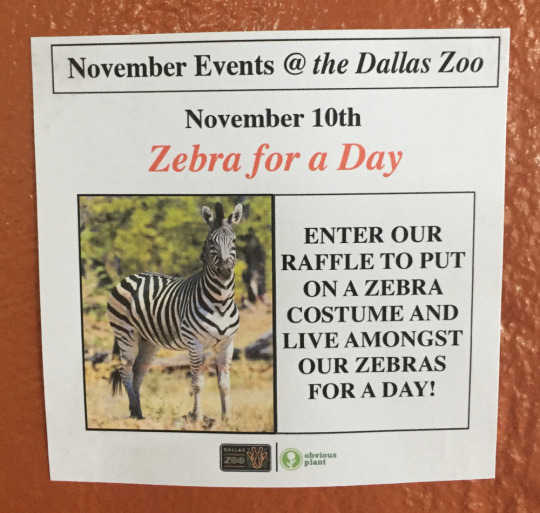
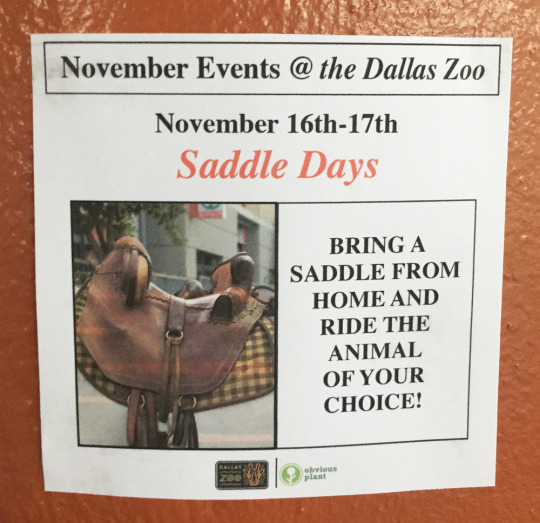
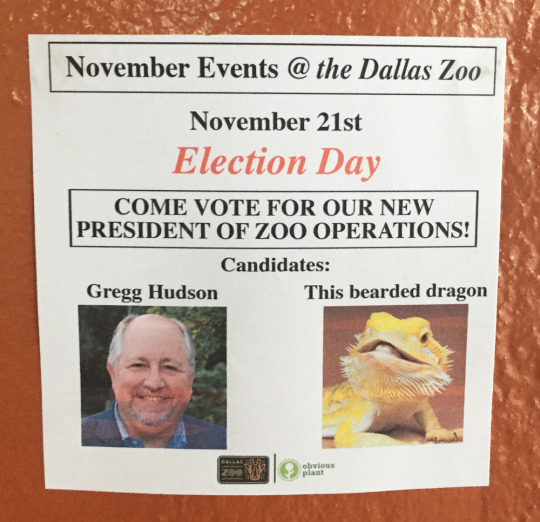
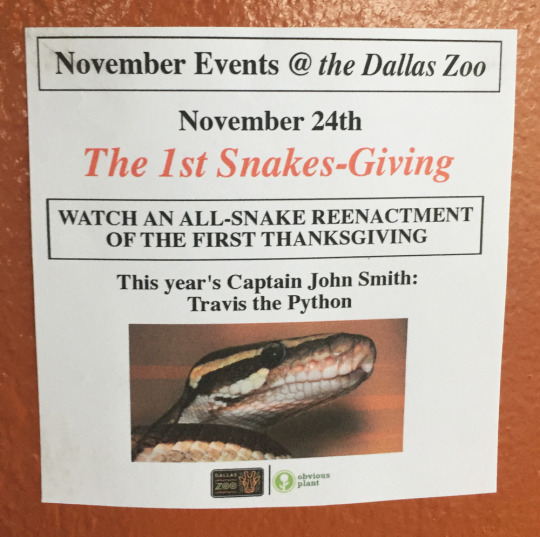
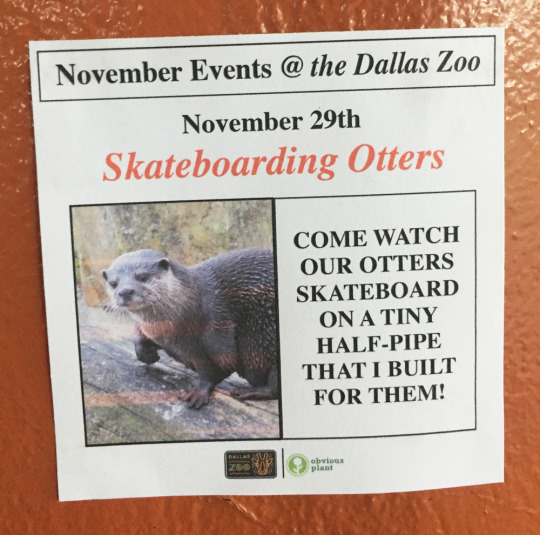
I left some fake zoo events at the Dallas Zoo.
40K notes
·
View notes
Photo









Today I want to introduce you to a fascinating new discovery from my research in the field of Philadelphia.
This is the Philadelphius Dude-icus, more commonly known as the Philly Dude.
Philly Dudes are small, but plentiful creatures, not dissimilar from a common city pigeon or mouse. Their population size is about 1:1 with the population of human residents of Philadelphia - with whom they share many characteristics.
Like most urban life, the Philly Dude has made special adaptations to better suit him to his surroundings - springy bones to navigate Philadelphia’s bumpy, poorly maintained terrain, high-pitched radar communication to subvert the sounds of traffic, and special eyes to quickly register all of the city’s human activity.
The Philly Dude is a naturally social creature, and takes many of his behavioral cues directly from the humans in his environment.
Sadly, this means that many of the same problems plaguing Philadelphia’s human residents have an exaggerated harmful effect on the Philly Dude. Because he is so teeny.
Of particular concern is the Philly Dude’s recent tendency towards antisocial behavior. He is most happy and healthy when he interacts with other Philly Dudes. In fact, this antisocial ailment has gotten so bad, that the Philly Dude is in serious danger of extinction.
Fortunately, as we did with the problems, we can also look to Philly’s human counterparts to begin understanding solutions.
Often, at the root of these harmful behaviors is the human routine. On a typical day, humans are more likely to stick to what’s familiar and comfortable, but that also makes things kind of boring.
However, when something novel is introduced, there is potential for a new experience - whether it’s positive or negative.
In the case of a positive novel experience, humans tend towards wanting to share it, which in turn attracts other humans, leading to more positive interactions. Once humans begin behaving in this way, Philly Dudes will follow suit, and embrace their natural social inclinations.
So if we take a look at what humans like, what Philly Dudes like, what Philadelphia has to offer, and the additional factor of novelty...the intersection of all those factors is an opportunity to save this wonderful species.
2 notes
·
View notes
Photo

SUBMISSION: Record cover for Spanish band Rosvita. By Rafael Jaramillo
543 notes
·
View notes
Photo




Here’s my space. Lots of potential.
Time to break out the sharpies...
2 notes
·
View notes
Photo
On my mind....

Adore this drawing of the Eames Process
2 notes
·
View notes

